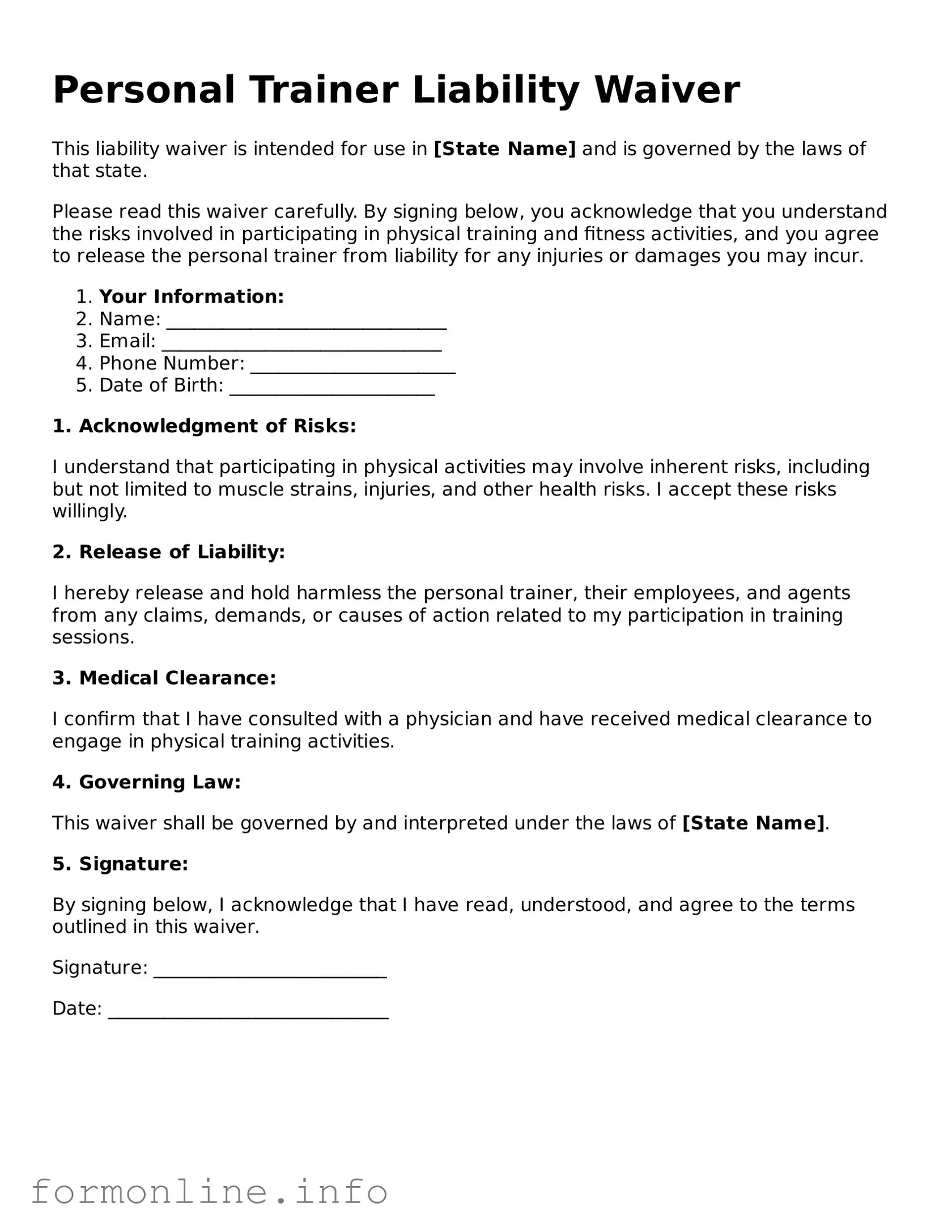Personal Trainer Liability Waiver
This liability waiver is intended for use in [State Name] and is governed by the laws of that state.
Please read this waiver carefully. By signing below, you acknowledge that you understand the risks involved in participating in physical training and fitness activities, and you agree to release the personal trainer from liability for any injuries or damages you may incur.
- Your Information:
- Name: ______________________________
- Email: ______________________________
- Phone Number: ______________________
- Date of Birth: ______________________
1. Acknowledgment of Risks:
I understand that participating in physical activities may involve inherent risks, including but not limited to muscle strains, injuries, and other health risks. I accept these risks willingly.
2. Release of Liability:
I hereby release and hold harmless the personal trainer, their employees, and agents from any claims, demands, or causes of action related to my participation in training sessions.
3. Medical Clearance:
I confirm that I have consulted with a physician and have received medical clearance to engage in physical training activities.
4. Governing Law:
This waiver shall be governed by and interpreted under the laws of [State Name].
5. Signature:
By signing below, I acknowledge that I have read, understood, and agree to the terms outlined in this waiver.
Signature: _________________________
Date: ______________________________
